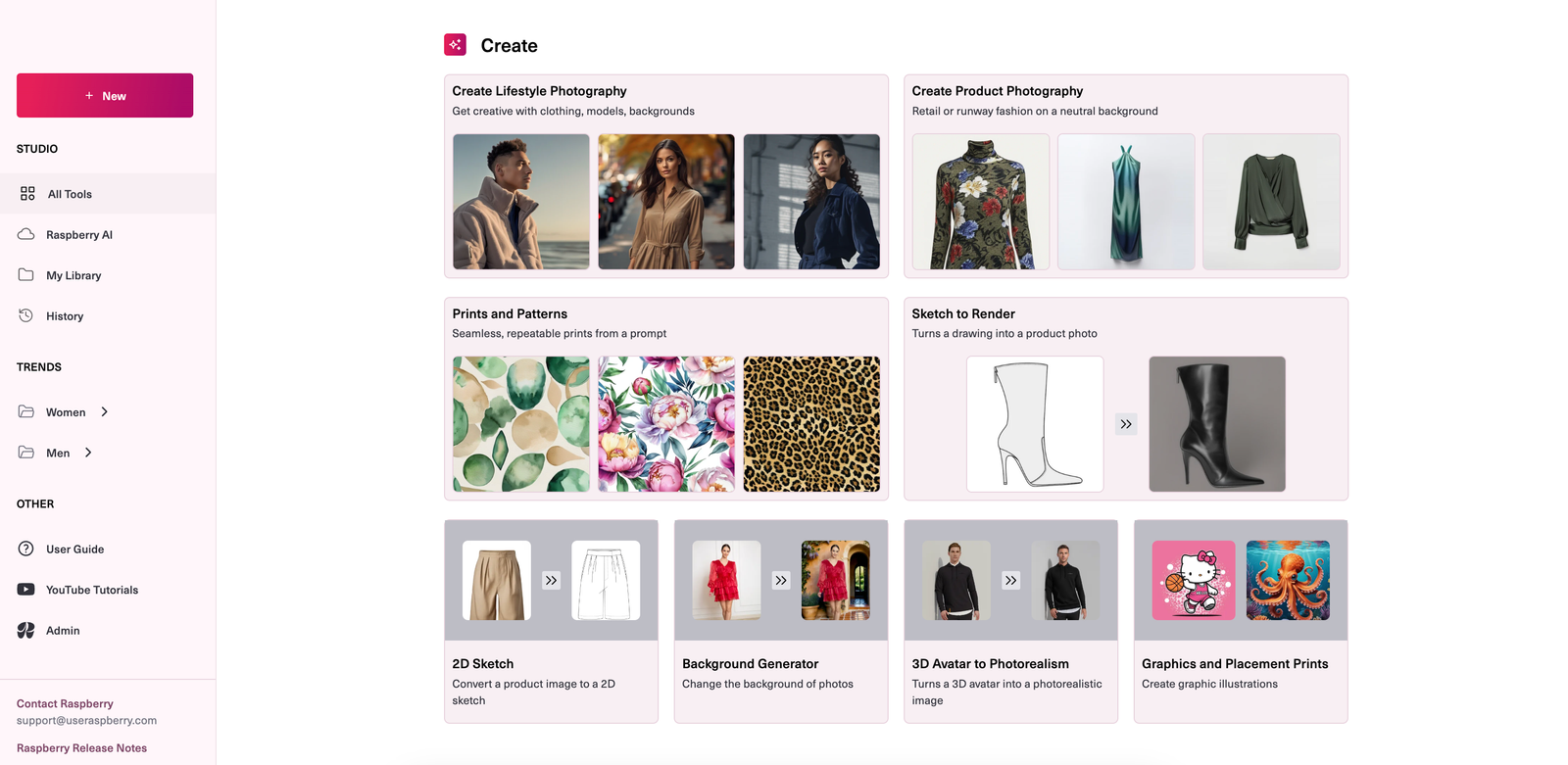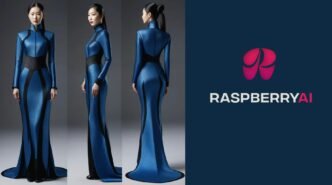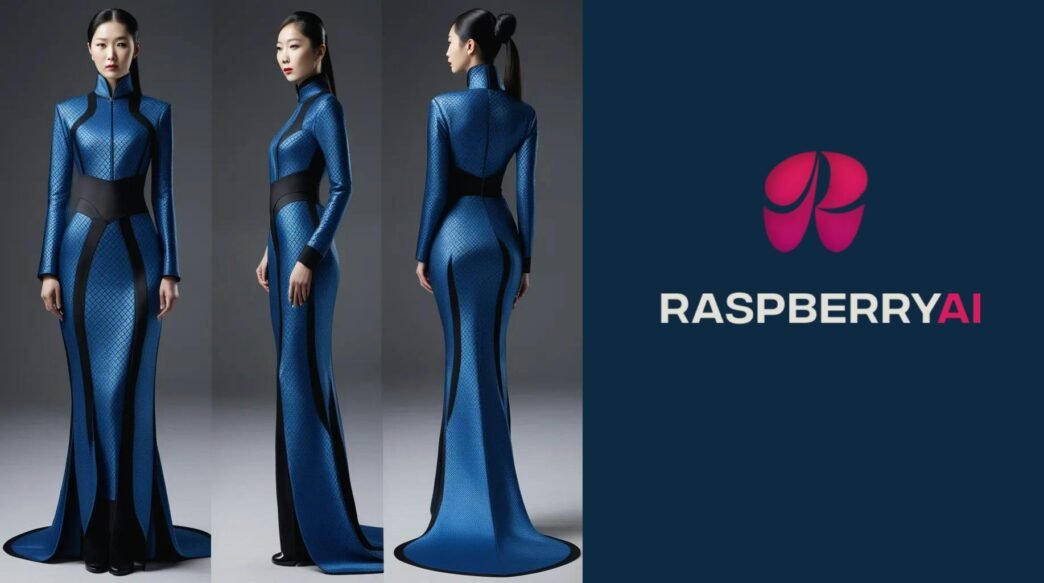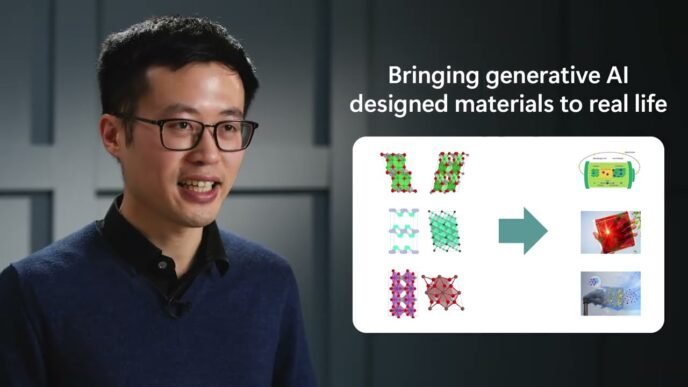The fashion industry has always been synonymous with rapid change, with new trends emerging every season. Fast-fashion giants like Shein, H&M, and Zara have revolutionized how often collections are refreshed, creating immense pressure on brands to keep up with the demand for fresh styles. To meet this growing need, technology is stepping in as a game-changer, streamlining processes that once took weeks or months. Among these innovations is Raspberry AI, a startup that is redefining how fashion is designed using cutting-edge generative AI.
Founded just two years ago by Cheryl Liu, Raspberry AI has already made a significant impact on the fashion landscape, helping designers visualize and iterate their ideas almost instantly. Backed by $24 million in funding led by Andreessen Horowitz (a16z), Raspberry AI is poised to accelerate the creative process and redefine the future of fashion design.
The Birth of Raspberry AI
Cheryl Liu, the visionary behind Raspberry AI, recognized an untapped opportunity in applying generative AI to fashion design. With her background as a private equity analyst at KKR, focusing on retail, and subsequent roles at Amazonand DoorDash, Liu combined her industry expertise with emerging technologies like OpenAI’s DALL-E and Stability AI’s Stable Diffusion to create Raspberry.
“For the first time in history, you could rapidly create hundreds of designs in a way that you could never do before,” Liu shared in an interview with TechCrunch.
Before generative AI, fashion designers relied heavily on two main approaches:
- Physical Prototypes: Ordering physical samples, which took weeks to produce.
- Traditional CAD Tools: Using tools like Adobe Photoshop or Browzwear, which were time-consuming and lacked the ability to create photo-realistic designs instantly.
With Raspberry AI, designers can now generate photo-realistic images of their sketches, enabling brands to visualize their products as they would appear in the real world.
How Raspberry AI Works
Raspberry AI uses a text-to-image platform to transform sketches into lifelike digital designs. This technology allows designers to experiment with various materials, colors, and patterns without the need for physical prototypes.
Here’s how Raspberry AI stands out:
- Versatility: Designers can view a single product in 50 different iterations—something previously impossible with physical prototypes.
- Speed: The platform delivers designs almost instantly, significantly reducing the time-to-market for new collections.
- Accuracy: Raspberry AI understands and interprets industry-specific terminology, providing a competitive edge over generic AI tools like MidJourney or DALL-E.
For instance, Liu highlighted the term “fuzzy sweater”, explaining how Raspberry’s system accurately generates designs based on the intricate details associated with such terms, a feature missing in general-purpose AI tools.

Raspberry AI’s Clientele
Raspberry AI’s innovative platform has garnered attention from 70 prominent clients across the fashion industry. These include:
- Under Armour: A leading athletic brand.
- Gruppo Teddy: An Italian manufacturer with 8,840 stores across 39 countries.
- MCM Worldwide: A luxury designer brand.
Such rapid adoption underscores Raspberry AI’s ability to meet the industry’s demand for faster, more efficient design processes.
Funding Success and Future Plans
Raspberry AI’s growth story caught the eye of Andreessen Horowitz, leading to a $24 million Series A funding round, with additional investments from Greycroft, Correlation Ventures, and MVP Ventures. This comes just months after a $4.5 million seed round.
Bryan Kim, a partner at Andreessen Horowitz, expressed confidence in Liu’s vision and the startup’s potential, stating:
“We got excited about Cheryl as a founder and how she approaches building a company.”
The funding will enable Raspberry AI to:
- Expand Its Team: Hiring professionals in engineering, sales, and marketing.
- Broaden Its Reach: Extending its design capabilities to home, furniture, and cosmetics products.
Competitive Edge in a Crowded Market
While Raspberry AI faces competition from MidJourney, Adobe Firefly, and other AI image generators, it stands apart due to its:
- Industry-Specific Knowledge: A deep understanding of fashion design terminology.
- Sketch-to-Image Capability: Unique ability to create photo-realistic images from hand-drawn sketches.
This focus on catering to professional designers has made Raspberry a preferred choice for brands seeking cutting-edge tools to accelerate their design workflows.
Impact of Raspberry AI on Fashion
The impact of Raspberry AI on the fashion industry is transformative:
Table: Comparing Traditional Design vs. Raspberry AI
| Aspect | Traditional Design | Raspberry AI |
|---|---|---|
| Time to Create Designs | Weeks | Minutes |
| Cost of Prototypes | High | Low |
| Design Iterations | Limited | Unlimited |
| Accessibility | Manual Tools | AI-Driven Platform |
Key Statistics:
- 70% Faster Design Processes: Brands using Raspberry report significantly reduced design times.
- 50+ Iterations: Designers can experiment with dozens of variations in a fraction of the time.
The Future of AI in Fashion
Raspberry AI’s journey highlights the growing role of AI in fashion design. As generative AI continues to evolve, it is likely to drive further innovation in:
- Sustainability: Reducing waste by minimizing the need for physical prototypes.
- Customization: Allowing brands to create tailored designs for specific markets.
- Collaboration: Empowering designers to work seamlessly with AI tools to push creative boundaries.
Raspberry AI is not just a tool; it is a revolution in the fashion industry. By leveraging generative AI, it has enabled designers to accelerate their creative processes, reduce costs, and meet the ever-increasing demand for fresh styles. With its recent funding and plans for expansion, Raspberry AI is set to lead the way in transforming how fashion is designed and manufactured.
As Cheryl Liu’s vision becomes a reality, the future of fashion design looks faster, smarter, and more innovative than ever before.
For more visit raspberry.ai













